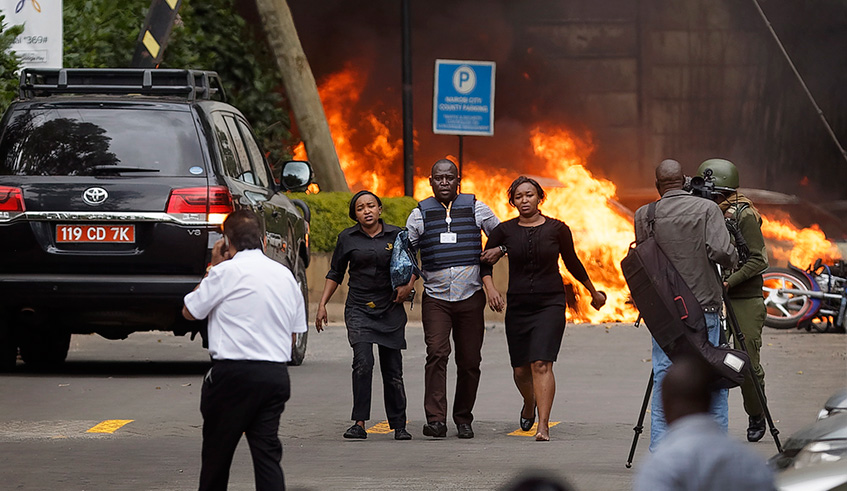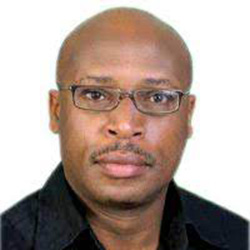



Though there lacks evidence it is Twain who coined it, the nifty line was once described as "too good to resist”.
This is what occurred to me when I recalled this rather unremarkable sentence: We look to the New Year with the threat of terrorism as real as it has ever been. Note that this could be said of any other year.
It was the opening sentence in this column in January 2015 after yet another round of Al Shabaab attacks in Kenya as the previous year drew to a close. (See "Understanding terrorism through mathematics”, The New Times, January 03, 2015)
This not to suggest there’s anything wrong with the sentence. But that it is the attack at the DusitD2 Hotel earlier this month in Nairobi that provoked my mind to that nifty line about history and rhyming.
It reminded of the macabre reason we should enter each new year with renewed vigilance wherever we may be.
The threat of terrorism or its consequences is not about the particular country it is unleashed.
As I write, international investigative agencies including the FBI and Interpol are camped at the DusitD2 gathering clues about the attack and the attackers.
This is to update their databases on the attackers’ profiles and the changing trends of their tactics to better counter them in the global war against terrorism.
Already the DusitD2 assault reveals how the face of regional terrorism has literally changed.
While before the stereotype of the Shabaab terrorist was Somali, the attackers were Kenyan – born and bred.
This was until their radicalization, as evidenced by the well-pocketed Kenyan middleclass lifestyle of the lead attacker and his girlfriend, a journalism graduate.
The tactic to source from the country is to enable attackers to blend in their target social environment and evade the detection of security agencies.
According to the International Crisis Group says the Shabaab, the change of tactic started shortly after the September 2013 Westgate Mall attack in Nairobi with the establishment of local cells.
The intended results are clear, complete with the high-value target at the up-market location of the hotel nested close to Western embassies – German, Australian and Dutch – to extract maximum media attention.
And, with some of the major international media organization headquartered in the city, it reminds us that the underlying terrorist principle remains the same, which is to gain the broadest attention whatever their deranged cause may be.
I say deranged advisedly. Physicists and mathematicians looking at the terrorist phenomena created equations and generated data that reflects the universal behaviour of the individual insurgents or clusters of them. (See "Understanding terrorism through mathematics”, The New Times, January 03, 2015).
In their computer models, the attackers behave like random, thoughtless particles, demonstrating that terrorists don’t have to be rational or require central command to effectively consummate their deadly attacks.
One would certainly wonder how rational the young Kenyan men were to willingly go to the slaughter despite that apparent living the good life with money to splash around.
But in one of the universal justifications for terror, a successful strike is not one that does the most damage, but one that draws the most attention.
Observe that the casualty figures at the DusitD2 attack numbered just over 20 dead, compared to 71 at the Westgate Mall attack and the 150 dead at the April 2015 attack at Garissa University.
This brings in the other lesson, also observed globally: that the reduced number of the fatalities was due better preparedness and a much-improved counterterrorism response.
The 2018 Global Terrorism Index (GTI) reports a decline in terrorism with deaths falling for the third consecutive year after peaking in 2014. The number decreased by 27per cent in 2017.
However, the GTI highlights an ongoing persistence of terrorism in several countries in Asia and Africa. Somalia and Egypt have both registered increases in deaths from terrorism in 2017.
Therefore, while terrorism deaths by Al-Shabaab declined in Kenya to 100 in 2017 from 256 in 2014, the ominous portent for the region is that the group overtook Boko Haram as the deadliest terror group in sub-Saharan Africa for the first time since 2010.
The total number of deaths increased by 93 per cent from 2016 to 2017 to stand at 1,457. Boko Haram’s stood at 1,254.
The numbers make it worrying, especially about what the increase portends regionally unless something is done.
Thus the other observation, to come back the computer models referred to above: that the terrorists are not invincible even as they change their tactics.
Using probability or what the mathematicians are terming percolation theory, each terrorist in a cell or network can be independently detected depending on factors such as the number of law enforcement agents tasked with tracking suspects as well as on the willingness of citizens to offer information.
This latter is what happened during the DusitD2 attack when a citizen alerted the security agencies after seeing the terrorist’s car in the media and connecting it to his neighbour. This has greatly aided the ongoing investigations.
Twitter: @gituram
The views expressed in this article are of the author.


